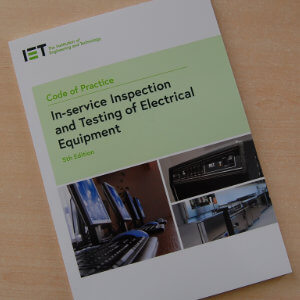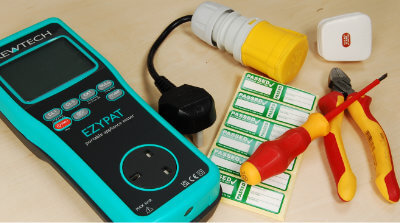Can I do my Own PAT Testing?
The short answer is yes, it is possible to do your own PAT testing. However, there are a few factors to consider before you decide to go down this path.
Understanding the Basics of PAT Testing
PAT testing, or Portable Appliance Testing, is a requirement for most businesses and organisations and involves carrying out a visual inspection and a series of tests on electrical appliances. These can range from small items like toasters or kettles to large three-phase industrial equipment. The inspection and testing ensures that all electrical equipment is safe for use, reducing the risk of electrical accidents.
Who Can Conduct PAT Testing?

There isn't a specific qualification or certification required to perform PAT testing. However, it must be carried out by a competent person, but what does 'competent' mean in this context? The Institution of Engineering and Technology (IET), which publishes the Code of Practice for In-service Inspection and Testing of Electrical Equipment, provides some clarity. According to the IET, a competent person is someone who is appropriately trained and has the necessary knowledge and skills to perform the tests and interpret the results correctly.
The Need for Training
While anyone can carry out PAT testing without any qualifications or certification, it's essential to understand that a certain level of knowledge and competence is required. Misinterpreting test results can not only lead to serious safety risks but also to incorrect assessments of equipment. An untrained tester might incorrectly fail an appliance that is actually safe to use, causing unnecessary disruption and expense.
Therefore, if you decide to do your own PAT testing, it's highly recommended that you attend a PAT testing course. You will gain an understanding of equipment construction types, how to identify potential issues, how to use test equipment, and how to interpret the results correctly. This training can help ensure that your PAT testing is both safe and accurate, avoiding both unnecessary risks and unnecessary costs.
The Benefits of Doing Your Own PAT Testing
Choosing to conduct your own PAT testing comes with a number of significant benefits. Here are the main advantages:
- Minimising Disruption: When you handle PAT testing in-house, you can schedule it at times that cause the least disruption. Because electrical equipment needs to be switched off for testing, coordinating with an external contractor can sometimes mean having to test during peak operational hours.
- Avoiding Missed Equipment: Contractors can sometimes miss equipment, or equipment may be off-site during their visit, leaving you with potential safety hazards. When you're doing your own PAT testing, you're more likely to be aware of all the equipment that needs testing.
- Ensuring Equipment Availability: Equipment that's in constant use may not always be available during a contractor's visit. By conducting PAT testing internally, you can ensure that all equipment is available and tested at the most convenient times.
- Utilising Quiet Periods: Unlike tasks that are time-critical, PAT testing can often be fitted into quieter periods. This enables more efficient use of time and resources.
- Improved Quality Control: Unfortunately, the PAT testing industry has gained a somewhat mixed reputation, with some companies known to rush jobs and cut corners due to their pay-per-item model. When you do your own PAT testing, you can ensure that each item is tested thoroughly and correctly, maintaining a high standard of safety.
- Transparency and Trust: It can be difficult to verify whether a PAT testing company has actually carried out the inspection and testing correctly. By taking on this responsibility internally, you have full visibility of the process and can be confident in the integrity of the results.
- Cost Savings: While there is an initial investment in training and equipment, doing your own PAT testing can lead to cost savings over time.
What Equipment is Needed?

If you've decided to carry out PAT testing in-house, there are some essential pieces of equipment that you'll need to perform the tests. Here's a breakdown of the basic tools required:
- PAT Tester: This is the primary tool used for PAT testing. There are various models available on the market, ranging from simple pass/fail devices to more advanced testers that provide detailed test readings. The type of PAT tester you'll need largely depends on the number of items you have and the type of records you want to keep. They can range in price from a few hundred pounds to a few thousand pounds, but for most situations, a tester in the £400 - £500 price range will be more than adequate.
- Labels: After testing each appliance, it's standard practice to attach a PAT testing label. This indicates the appliance has been tested and shows the date of testing.
- Test Adaptors: These are used with the PAT tester to connect equipment that has non-standard plugs, such as industrial 110V or 3-phase connectors. These will only be required if you have equipment that doesn't have a standard 13A plug.
- Tools & Accessories: You will also need a few basic tools such as screwdrivers for opening plugs and wire strippers for making minor repairs such as rewiring a plug. It's also handy to carry a few spare plugs and a selection of fuses.
Conclusion
Taking on your own PAT testing can be a significant advantage for many businesses. From improved flexibility and reduced disruptions, to ensuring all equipment is thoroughly tested and available when needed, there are several compelling reasons to consider this approach. Not only does it provide increased control over the process, but it can also contribute to potential cost savings over time. However, it's important to ensure you have the right knowledge, training, and equipment to do it safely and effectively.
Learn With Us
If you are interested in learning how to carry out the PAT testing yourself, we run courses at venues across the county as well as onsite training. Our courses cover everything from the basics of electrical safety to hands-on training with testing equipment. If you have any questions or require further information about PAT testing or our courses, don't hesitate to get in touch with us.